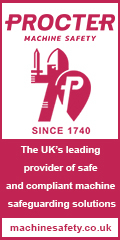
Posted to News on 7th Apr 2015, 18:34
Maintenance: how much is too much? Too little?
Dan Miklovic, a Principal Analyst with LNS Research, discusses how asset performance management (APM) can be used to optimise maintenance intervals, thereby increasing equipment availability and reliability while simultaneously minimising risk and costs.

One of the prime reasons for pursuing asset performance management (APM) is to optimise the availability and reliability of your assets while minimising risk and costs. It is the primary reason companies decide to move beyond reactive maintenance. There always seems to be the delicate balance between not enough maintenance and too much maintenance. Either way, unexpected failures can not only lead to lost productivity and unexpected costs, they can result in far worse consequences, including being in the spotlight in national or international news.
When maintenance activities become part of the news
Before the fatal Germanwings Barcelona to Dusseldorf flight crash in the French Alps on 24 March 2015 was determined to be a deliberate act, the speculation was that some type of failure incapacitated the crew and caused the accident. The big question was 'how could that be?' given the plane had undergone a significant preventative maintenance (PM) procedure just the day before. In this case it turns out maintenance was not the issue, but for the first two days it was the prime suspect.
The day before, in a situation at the Sugarloaf Ski Resort in Carrabassett Valley, Maine, a mechanical failure in the ski lift gearbox disabled the braking system, resulting in seven injured riders with three hospitalised. Approximately 220 riders had to be evacuated off the lift. Just a day earlier the lift had undergone routine PM and had a daily inspection prior to use. That lift had passed an annual state inspection and dynamic load test in the last year and regularly had PM at weekly, monthly and yearly intervals, yet it still failed catastrophically. Stories like this seem to occur regularly and the reputation damage "" even if short-term, such as in the Germanwings accident, where maintenance was not the issue "" can still have an impact.
Why too much maintenance is just as bad as not enough
One of the objectives of a good PM or predictive maintenance (PdM) programme is to prevent failures by performing routine inspections and preventative repairs. Yet companies report that equipment that has been operating well, when taken offline for PM, can fail soon after return-to-service for a variety of reasons. A classic study done by the Australian Defence Forces determined that PM activities can induce failures for a variety of reasons:
- Defective replacement parts introducing a mechanism not present before PM.
- Incorrect procedures introducing anomalies that result in failures.
- Effectiveness issues such that maintenance procedure may not complete properly, such as seals seating or gaskets not sealing.
- Damage during maintenance may occur that goes undetected, introducing a failure mechanism.
- Extended maintenance activity introducing lack-of-use cases where equipment operates best when in continuous service.
- Human error "" ie people just executing the wrong activity.
There is also the fact that, particularly after significant rebuild activities, the classic bathtub curve also know as the P-F curve applies once again, so failures may seem to increase as a result of maintenance introducing new 'infant mortality' failures.
The solution lies in optimising the maintenance interval
The goal of APM is to achieve operational excellence with your assets. This means maintaining at just the right interval. Classic PM programmes, whether calendar- or usage-based, typically either over- or under-maintain equipment.
The way to optimise maintenance intervals is to utilise both condition-based maintenance (CBM) and reliability-centred maintenance (RCM) approaches on those critical assets, such as with the gearbox on the Sugarloaf ski lift. While not every asset demands the rigour of RCM, those assets whose failure can lead to injury or the loss of life really need the type of critical assessment that RCM provides to achieve a proper level of operational risk management (ORM).
For more information on aligning people, processes and technology to achieve success across Asset Performance Management, download the LNS Research Asset Performance Management (APM) Best Practices Guide.
Want the latest machine building news straight to your inbox? Become a MachineBuilding member for free today >>

















